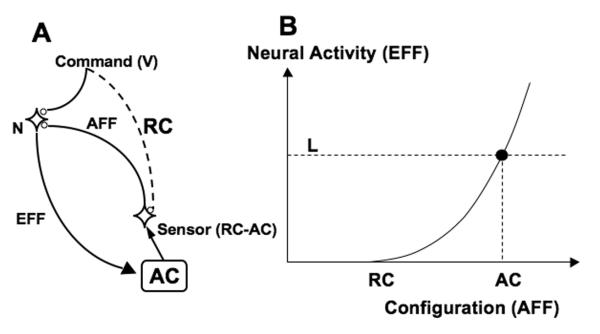Fig. 2.
An illustration of control with referent configurations. Sending a command expressed in membrane potential units (V) to a target group of neurons (N) results in an efferent (EFF) signal that ultimately leads to a change in actual configuration (AC) of the system. The same signal leads (after processing, shown by the dashed line) to a referent configuration (RC). A sensor measures the difference between RC and AC and projects back to N. In other words, setting a referent configuration (RC) defines a range of actual configurations (AC) that lead to activation of N; larger (AC-RC) values lead to higher activation levels. The activation of N produces a mechanical effect that moves AC towards RC. When the two coincide, the neuron becomes silent, and the system stays at RC. If an external load (L) prevents AC from moving towards RC, an equilibrium state is reached (EP) corresponding to non-zero neuronal (and muscle) activation.

